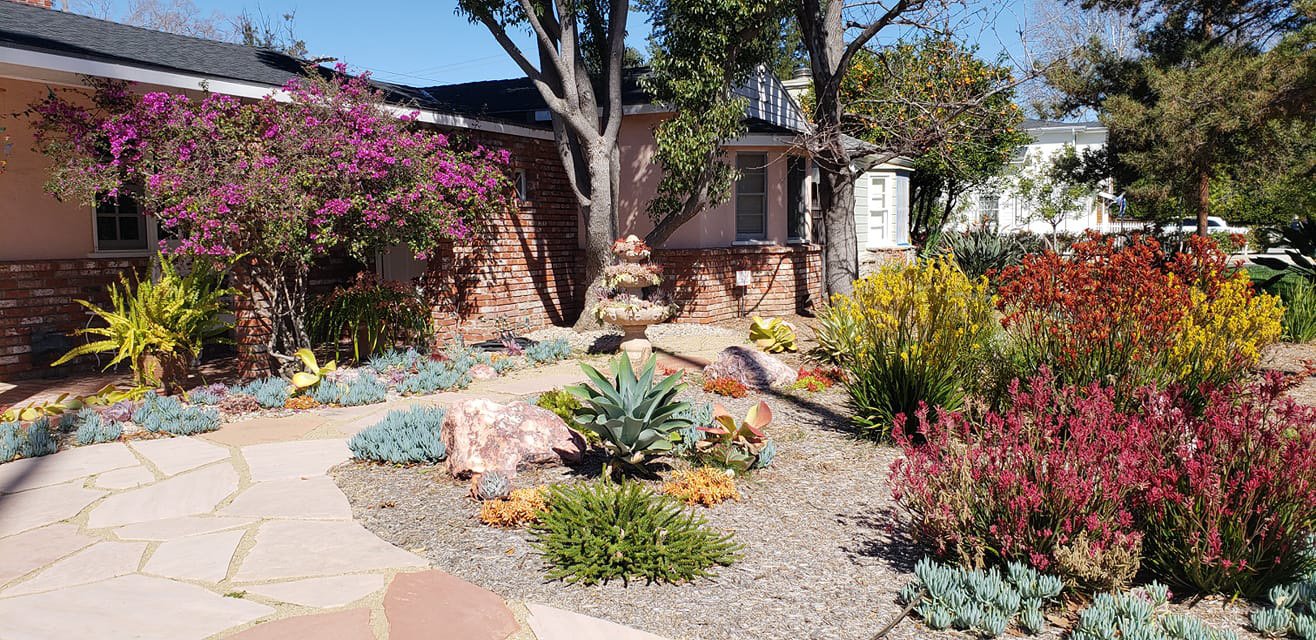
Environmental Issues
Urban Trees and Landscaping
Median landscaping on Townsgate Rd
The City is proud of its urban forest, which is expanding all the time. A tree inventory was conducted in 2021 detailing the types and locations of the approximately 27,000 community street trees. Upon request, the City provides property owners with street trees at their property at no cost. Residents are expected to water and maintain those trees. Street trees are selected based on a number of important factors, such as climate suitability, drought and pest tolerance, and the non-invasiveness of roots. Increasing the City’s tree canopy is one important way to reduce urban heat and sequester carbon.
Plant selection for public landscaped areas such as street medians is guided by the City’s Forestry Master Plan which was updated in 2017. A number of plant palettes were selected based on drought and pest tolerance, climate suitability, habitat and pollinator friendliness, and community preference.
GOALS AND MEASURES
Ecosystems
The City employs an Integrated Pest Management (IPM) strategy using beneficial insects such as ladybugs wherever possible to address pests. Biochar is utilized to increase carbon sequestration and water retention in soil, and pollinator habitat is prioritized. The City is recognized both as a Tree City USA and a Bee City USA .
Pollinator Habitat and Adding Biochar when Planting a Tree
Light Pollution
The City does not have a night sky protection ordinance although it does have a sign ordinance that places limits on their size, placement, and brightness. The City employs relatively low-wattage streetlights and limits these to try to preserve a more rural feel throughout most of the City. One of the energy measures in the CEAP is to transition to LED streetlights. These are more directional than the existing high-pressure sodium lamps and will only illuminate the street directly below them.
Night Sky and Streetlight Example
GOALS AND STRATEGIES
Noise and Air Pollution
The City’s current noise ordinance prohibits the operation of loud equipment, such as leaf blowers and lawnmowers, between the hours of 9:00 p.m. and 7:00 a.m. During the day, such equipment is permitted. Besides noise, such equipment emits significant air pollution, in particular hydrocarbons and nitrogen oxides, or so-called NOx, which leads to smog formation and its associated health impacts. At least twenty cities in California have banned the use of gas leaf blowers for these reasons.










